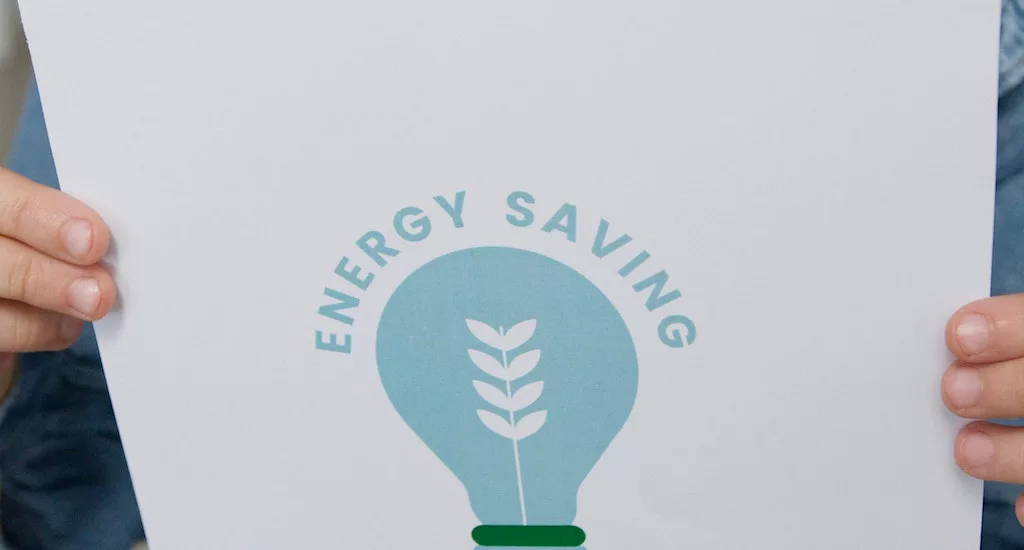Are you looking for ways to make your building more energy efficient and gain a competitive edge? In today’s world, energy efficiency is no longer just a “nice to have” but a “must have” for any business. In this blog, we will discuss the benefits of energy efficiency, the economics of energy efficiency, different types of energy-efficient solutions, best practices for implementing and monitoring energy efficiency programs, and resources to help you get started.
Introduction to Energy Efficiency
Energy efficiency is the process of achieving the same level of productivity with fewer energy resources. It is a way to reduce energy use and save money on energy bills. Energy efficiency is also a key component of sustainable building design and operations. By reducing energy use, buildings become more environmentally friendly and reduce their carbon footprints.
Energy efficiency can be achieved through a variety of methods, including the implementation of energy-efficient technologies, the adoption of energy-efficient practices, and the implementation of an energy-efficiency program. Energy-efficient technologies include things like LED lighting, smart thermostats, and energy-efficient appliances. Energy-efficient practices include things like unplugging unused appliances, using natural lighting and setting timers for lights and appliances. An energy efficiency program is a comprehensive approach to energy management that involves setting energy goals, monitoring energy use, and making changes to reduce energy use.
Benefits of Energy Efficiency for Your Building
The benefits of energy efficiency for your building are numerous. Energy efficiency can reduce your energy bills, improve the comfort and safety of your building, and increase the value of your property. Additionally, energy-efficient buildings are better for the environment and demonstrate your commitment to sustainability.
By reducing energy use, you can save money on energy bills. Energy-efficient technologies and practices can reduce energy use by up to 40%, which can significantly reduce your energy costs. Additionally, energy efficiency can improve the comfort and safety of your building by providing better air quality and reducing the risk of fire and other hazards. Finally, energy efficiency can increase the value of your property by making it more attractive to potential buyers or tenants.
The Economics of Energy Efficiency
The economics of energy efficiency can be difficult to understand, but the financial benefits are undeniable. Energy efficiency can save you money on energy bills, improve the value of your property, reduce maintenance costs, and increase productivity.
Energy efficiency can save you money on energy bills by reducing the amount of energy you need to power your building. It can also improve the value of your property by making it more attractive to potential buyers or tenants. Additionally, energy efficiency can reduce maintenance costs by reducing the need for repairs and replacements. Finally, energy efficiency can increase productivity by providing a comfortable and safe environment for employees.
Different Types of Energy-Efficient Solutions
There are a variety of energy-efficient solutions available for your building. The most common energy-efficient solutions include LED lighting, smart thermostats, energy-efficient appliances, and building insulation.
LED lighting is a cost-effective solution that uses up to 90% less energy than traditional lighting. Smart thermostats can help you save energy by automatically adjusting the temperature to the optimal level. Energy-efficient appliances use up to 30% less energy than traditional appliances. Finally, building insulation can reduce energy use by up to 40%.
Adopting Energy-Efficient Technologies
Adopting energy-efficient technologies is one of the most effective ways to reduce energy use and save money on energy bills. LED lighting, smart thermostats, and energy-efficient appliances can all be installed in your building to reduce energy use. Additionally, building insulation can help keep your building cooler in the summer and warmer in the winter, which can reduce your energy bills.
It is important to do your research before investing in energy-efficient technologies. Make sure to compare the cost of installation and operation with the expected energy savings. Additionally, you should consider the size and layout of your building to determine the best type of technology for your needs.
Implementing an Energy Efficiency Program
In order to achieve maximum energy savings, it is important to implement an energy efficiency program. An energy efficiency program is a comprehensive approach to energy management that involves setting energy goals, monitoring energy use, and making changes to reduce energy use.
The first step in implementing an energy efficiency program is to set energy goals. These goals should be measurable and achievable and should take into account the size and layout of your building. The next step is to monitor energy use. This can be done with energy meters or tracking software. Finally, make changes to reduce energy use, such as installing energy-efficient technologies, adopting energy-efficient practices, and implementing an energy-efficiency program.
Identifying the Right Solutions for Your Building
Identifying the right solutions for your building can be a challenge. It is important to consider the size and layout of your building, as well as the cost of installation and operation. Additionally, you should research the expected energy savings and determine which solutions are best suited to your needs.
When researching energy-efficient solutions, make sure to look for products that have been certified by organizations such as ENERGY STAR and LEED. These organizations provide ratings and certifications for energy-efficient products, which can help you make an informed decision. Additionally, it is important to consider the long-term costs of energy-efficient solutions, as some solutions may have a higher initial cost but a lower long-term cost.
Best Practices for Maintaining and Monitoring Your Energy Efficiency Solutions
Maintaining and monitoring your energy efficiency solutions is essential for achieving maximum energy savings. It is important to regularly inspect your energy-efficient solutions to identify any problems and make sure they are operating efficiently. Additionally, you should monitor energy use to ensure you are achieving the expected energy savings.
When monitoring energy use, make sure to compare energy use before and after implementing energy efficiency solutions. This will help you identify any problems and determine whether the solutions are working as intended. Additionally, make sure to track energy use over time to identify any changes in energy use.
Resources for Energy Efficiency Solutions
There are a variety of resources available to help you find the right energy-efficiency solutions for your building. Organizations such as ENERGY STAR and LEED provide ratings and certifications for energy-efficient products. Additionally, there are a number of online resources available to help you compare different energy-efficient solutions and determine which ones are best suited to your needs.
Lastly, there are a number of government and non-profit organizations that provide resources to help you implement energy efficiency solutions in your building. These organizations provide information on energy-efficient technologies, energy-efficient practices, and energy-efficiency programs. Additionally, some organizations offer incentives and grants to help offset the cost of energy-efficient solutions.
Conclusion
Energy efficiency is no longer just a “nice to have” but a “must have” for any business. Energy efficiency can reduce energy use, save money on energy bills, improve the comfort and safety of your building, and increase the value of your property. Additionally, energy efficiency can help you gain a competitive edge by demonstrating your commitment to sustainability.
There are a variety of energy-efficient solutions available for your building, including LED lighting, smart thermostats, energy-efficient appliances, and building insulation. Additionally, it is important to implement an energy efficiency program to ensure maximum energy savings. Finally, there are a number of resources available to help you find the right solutions for your building.
By adopting energy-efficient solutions, you can reduce energy use, save money on energy bills, and gain a competitive edge. So, start exploring your energy-efficient options today and take the first step towards a more sustainable future.


